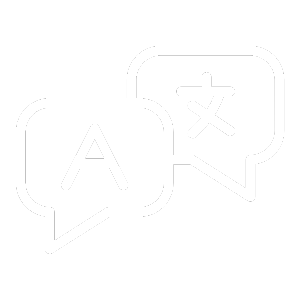Evidence-based interventions are a critical component of a strong Multi-Tiered System of Supports (MTSS). However, when a student needs additional help, it can be challenging to identify which intervention is appropriate, with a strong evidence base, and a track record of success, let alone figuring out how to implement that intervention with fidelity.
This guide will walk through 15 interventions (including detailed information on what, how, and why) found in the Branching Minds Intervention Library for literacy, mathematics, social-emotional learning (SEL), behavior, and attendance, as well as interventions to support English Language Learners (ELLs). The Branching Minds Learning Science team curates all of the interventions in the support library from the most trusted and respected hubs of evidence-based supports, including What Works Clearinghouse, Evidence for ESSA, Intervention Central, Harmony SEL, and the Florida Center for Reading Research, to name a few. Each support has been reviewed and categorized based on the ESSA tiers of evidence.
Don't have time to read?
Phoneme-Grapheme Mapping
Literacy intervention for students in grades K-4
Phoneme-grapheme mapping is a visual way to represent the relationship between phonemes and graphemes. Students learn to identify the sounds within a word and then connect that to the appropriate letter in order to begin spelling words.
How to Implement:
- Say the word aloud, show your students a picture of the word, and make sure they understand the definition.
- Guide your students through segmenting the word into sounds. Students can tap their fingers to represent each sound they hear in the word.
- For each sound (or phoneme) heard in the word, put a manipulative into a sound box. Alternatively, you can draw a dot or a line on a whiteboard for each sound.
- Then add the letters/letter pairs (or graphemes). For each sound heard in the word, there should be a corresponding grapheme.
- Students can also practice this independently, with a partner, or with a teacher in a small group. One way to do this is with a graphic organizer. This page can be put inside a plastic page protector or laminated so that students can write on it with dry-erase markers.
Downloadable Resource in PDF:
Related Resources:
| Phoneme-Grapheme Mapping: Step-by-step by “This Reading Mama” (YouTube video) | ||
| “Word Mapping Activities: Connecting Phonemes to Graphemes” blog post contains many more ideas for how students can practice phoneme-grapheme mapping | ||
| “Phoneme Grapheme Mapping Activities that Develop Orthographic Mapping” website gives further information on the topic, downloadable/ purchasable printables, and optional extension activities |
Research Base:
Phoneme-Grapheme Mapping has promising supporting evidence. Letter-sound knowledge strongly predicts a student’s ability to decode words. Approximately 50% of English words can be decoded by following a sound-symbol correspondence rule alone, and an additional 36% are spelled with only one error. Many students with reading disabilities or who struggle to learn to read have difficulty with phonology, an understanding of how sounds are organized within language. This can result in difficulty grasping the alphabetic principle, the knowledge of the relation between speech sounds, and the letters/letter patterns that represent them. Research has demonstrated the benefits of intensive, explicit instruction for developing struggling readers’ capacity to identify phonemes and apply knowledge of phoneme-grapheme correspondence for decoding.
Earle, Gentry & Sayeski, Kristin. (2016). Systematic Instruction in Phoneme-Grapheme Correspondence for Students With Reading Disabilities. Intervention in School and Clinic. 52. 10.1177/1053451216676798.
QRAC-the-Code
Literacy intervention for students in grades 6-12
QRAC-the-Code is a self-questioning strategy students can use to improve reading comprehension for expository texts. Although this is a literacy intervention, the strategy can be used in any subject area to help students better comprehend academic texts.
How to Implement:
Full instructions in the PDF version of the guide (Download the guide)
Downloadable Resource in PDF:
Related Resource:
| The Learning Disabilities Association of Ontario provides this comprehensive walkthrough of the QRAC-the-Code strategy |
Research Base:
Reciprocal Teaching for Reading Comprehension has moderate supporting evidence.
In one quasi-experimental study, researchers investigated the effects of three different forms of strategy instruction on the reading comprehension skills of 210 elementary-school students. Students were assigned to a group receiving intervention conditions or a control group. The intervention group was taught four reading strategies (summarizing, questioning, clarifying, and predicting) and practiced these strategies in small groups with reciprocal teaching, in pairs, or instructor-guided small groups. The intervention group received better scores on the post- and follow-up tests in reading comprehension and strategy use than the control group. Additionally, the students who practiced reciprocal teaching in small groups outperformed those in instructor-guided groups and traditional instruction groups on a standardized reading comprehension test.
Spörer, N., Brunstein, J. C., & Kieschke, U. (2009). Improving students' reading comprehension skills: Effects of strategy instruction and reciprocal teaching. Learning and Instruction, 19(3), 272-286. https://doi.org/10.1016/j.learninstruc.2008.05.003
Reciprocal Teaching for Reading Comprehension
Literacy intervention for students in grades 2-12
Reciprocal Teaching is a strategy in which students take over the teacher’s role as they lead small-group discussions about what they’ve read in order to help improve reading comprehension. This strategy also helps build social skills by promoting teamwork, giving students the opportunity to take turns, allowing them to practice listening skills, adhering to an assigned role, and waiting their turn to speak.
While this is primarily a literacy intervention, this can also be a useful strategy for deepening comprehension in any content area.
How to Implement:
Full instructions in the PDF version of the guide (Download the guide)
Downloadable Resource in PDF:
Related Resources:
| Reading Rockets provides a detailed walkthrough, printable templates, and ways to differentiate instruction through this strategy | ||
| Walkthrough for Reciprocal Teaching by Reading Rockets (YouTube video) |
Research Base:
Phoneme-Grapheme Mapping has promising supporting evidence. Letter-sound knowledge strongly predicts a student’s ability to decode words. Approximately 50% of English words can be decoded by following a sound-symbol correspondence rule alone, and an additional 36% are spelled with only one error. Many students with reading disabilities or who struggle to learn to read have difficulty with phonology, an understanding of how sounds are organized within language. This can result in difficulty grasping the alphabetic principle, the knowledge of the relation between speech sounds, and the letters/letter patterns that represent them. Research has demonstrated the benefits of intensive, explicit instruction for developing struggling readers’ capacity to identify phonemes and apply knowledge of phoneme-grapheme correspondence for decoding.
Earle, Gentry & Sayeski, Kristin. (2016). Systematic Instruction in Phoneme-Grapheme Correspondence for Students With Reading Disabilities. Intervention in School and Clinic. 52. 10.1177/1053451216676798.
Strategic Number Counting Instruction
Mathematics intervention for students in grades K-3
Strategic Number Counting Instruction is an intervention where students are taught explicit number-counting strategies for solving addition and subtraction problems. The strategies are reviewed with a teacher in an individual setting.
How to Implement:
- First, the student is given a copy of the number line (1-10 or 1-20), and they are taught these strategies for addition and subtraction:
- Addition: When presented with a two-addend addition problem, the student is taught to start with the larger of the two addends and to 'count up' by the amount of the smaller addend to arrive at the answer to the problem.
- Subtraction: The student is taught that the first number appearing in the subtraction problem (the minuend) is 'the number you start with' and the number appearing after the minus (subtrahend) is 'the minus number.' The student is instructed to start at the minus number on their number line and count up to the starting number while keeping a tally of numbers counted up on their fingers. The amount of digits separating the minus number and starting number is the answer to the problem.
- For each review session, the teacher follows these steps:
- Review the Strategies: At the beginning of the session, the teacher asks the student to name and describe the two strategies for solving addition and subtraction problems
- Flashcard Review: The teacher reviews addition/subtraction flashcards with the student for three minutes. Before beginning, the teacher reminds the student to try to recall the answer from memory, but if they do not know the answer, they should use the appropriate count-up strategy. The teacher then goes through the flashcards with the student. Whenever the student makes an error, the teacher directs the student to use the correct count-up strategy to solve. At the end of the three minutes, the teacher counts up the number of cards reviewed and records the number of cards that the student (i) identified from memory, (ii) solved using the count-up strategy, and (iii) was not able to correctly answer. These totals are recorded on the Strategic Number Counting Instruction Score Sheet.
- Repeat Flashcard Review: The teacher shuffles the flashcards, encourages the student to try to beat their previous score, and goes through the flashcards again for three more minutes. If the student makes an error, the teacher directs the student to use their count-up strategies.
- Record score: At the end of the three minutes, the teacher counts up the number of cards reviewed and records the number of cards that the student (a) identified from memory, (b) solved using the count-up strategy, and (c) was not able to correctly answer. These totals are again recorded on the Strategic Number Counting Instruction Score Sheet.
- After the review, the teacher gives the student feedback about whether (and by how much) the student's performance on the second flashcard trial exceeded the first and provides praise and encouragement to the student.
(Source: Intervention Central)
Downloadable Resources in PDF:
Appendix D: Strategic Number Counting Instruction Score Sheet
Appendix C: Number Line
Related Resource:
| Intervention Central provides detailed instructions for this intervention. |
Research Base:
Strategic Number Counting Instruction has moderate supporting evidence.
One randomized controlled study found that students who engaged in this practice with a teacher for 16 weeks (3 sessions a week; 20-30 minutes per session) improved significantly in their number counting fluency and procedural calculation skills compared to students in comparison groups.
Fuchs, L. S., Powell, S. R., Seethaler, P. M., Cirino, P. T., Fletcher, J. M., Fuchs, D., & Hamlett, C. L. (2010). The Effects of Strategic Counting Instruction, with and without Deliberate Practice, on Number Combination Skill among Students with Mathematics Difficulties. Learning and Individual Differences, 20(2), 89–100.
Combining Cognitive and Metacognitive Strategies
Mathematics intervention for students in grades 6-12
Students need a variety of skills to solve advanced math problems independently. They have to analyze the problem to determine the right approach (a cognitive skill) and then ensure they follow each step of that problem-solving process correctly (a metacognitive skill). The intervention below is a combination of the two; students are taught a 7-step process for solving word problems (cognitive strategy), and then students learn to use a 3-part self-coaching procedure for each of the 7 steps (metacognitive strategy).
How to Implement:
Full instructions in the PDF version of the guide (Download the guide)
Related Resource:
| Intervention Central provides a detailed step-by-step of this intervention and gives a helpful example scenario with sample prompts for each step. |
Research Base:
Combining Cognitive and Metacognitive Strategies has promising supporting evidence.
This study investigated the effects of cognitive and metacognitive strategies on the mathematical problem-solving of six middle school students with learning disabilities. They found that the students generally improved their mathematical problem-solving as measured by their performance on one-, two-, and three-step word problems.
Montague, M. (1992). The Effects of Cognitive and Metacognitive Strategy Instruction on the Mathematical Problem Solving of Middle School Students with Learning Disabilities. Journal of Learning Disabilities. https://doi.org/10.1177/002221949202500404Customized Self-Correction Checklist
Mathematics intervention for students in grades 1-12
The customized self-correction checklist intervention is a self-monitoring tool for the student. The teacher analyzes the errors that a student often makes when solving a math problem and develops a customized checklist for the student. The student can use this intervention to check their work before submitting an assignment.
How to Implement:
Full instructions in the PDF version of the guide (Download the guide)
Downloadable Resource in PDF:
Related Resource:
| Intervention Central provides a thorough description of this intervention, including guidance for when and how to fade the intervention. |
Research Base:
Customized Self-Correction Checklist has promising supporting evidence.
A teacher-researcher working with a third-grade class inclusive of students with learning disabilities and students for whom English was a second language recognized that a subgroup of these students was falling behind. The teacher-researcher created customized self-correction checklists for the students based on an error analysis of their difficulties. The students benefited so greatly from the intervention that they quickly caught back up with their typically-achieving peers. All students also reported that they enjoyed using the checklists.
Uberti, H. Z., Mastropieri, M. A., & Scruggs, T. E. (2004). Check it off: Individualizing a math algorithm for students with disabilities via self-monitoring checklists. Intervention in School and Clinic, 39(5), 269-275.
Feelings Chart
Social-Emotional intervention for students in grades K-5
A feelings chart is a visual aid that helps students to identify and express their emotions. This strategy can be used with students who have a difficult time identifying their own feelings or understanding the feelings of others. This strategy is also helpful for students who have difficulty regulating their emotions by helping them become better aware of their emotions and labeling them. By logging what caused them to feel a particular emotion, students can begin to identify patterns.
How to Implement:
- Print out the feelings chart or create your own.
- Go through each image and identify the feeling of the student(s). Depending on the student’s age, you can act out the feelings, ask them for examples of times they have felt that emotion, have them explain the emotion back to you, etc.
- When a student is experiencing an emotion, bring out the chart and have the student point to or say which feeling describes their current emotion.
- Remind the student of what the options are for when they feel that way (i.e., visit the classroom’s Calm Corner, take 5 deep breaths, squeeze a stress ball).
- In the feelings chart, log (or have the student log) why they are feeling that way.
- At the week's end, review the chart with the student. Identify and discuss any patterns in their behavior and develop a plan for managing their emotions the next week.
Downloadable Resource in PDF:
Related Resource:
| Child Behavior Guide offers more explanation for why you may choose to implement a feelings chart and strategies for encouraging students to explain their feelings more. |
Research Base:
Feelings Charts have research-based supporting evidence.
Research shows that students who participate in rigorously designed and well-taught social and emotional learning programs demonstrate more positive social behavior, are less likely to engage in risky and disruptive behavior, and show improved academic outcomes. Collaborative learning activities help students to build their social skills. Building an extensive vocabulary for emotions helps to increase emotional literacy, and build self-awareness and empathy for others.
Brackett, M. A., Rivers, S. E., Reyes, M. R., & Salovey, P. (2012). Enhancing academic performance and social and emotional competence with the RULER feeling words curriculum. Learning and Individual Differences, 22(2), 218-224.
Durlak, J. A., Weissberg, R. P., Dymnicki, A. B., Taylor, R. D., & Schellinger, K. B. (2011). The impact of enhancing students’ social and emotional learning: A meta‐analysis of school‐based universal interventions. Child development, 82(1), 405-432.
Harmony SEL
Social-Emotional Learning intervention for students in grades K-6
Harmony SEL is a free online SEL program. The goal of the program is to help teachers and other school-based adults to cultivate strong relationships between students. The program is flexible and easy to use through the online portal. There are five units for each grade level: Being My Best Self, Valuing Each Other, Communicating with Each Other, Learning from Each Other, and Supporting our Community. Harmony SEL is aligned with the CASEL framework.
How to Implement:
Full instructions in the PDF version of the guide (Download the guide)
Related Resources:
| Visit Harmony SEL to set up a free educator account and access the Harmony SEL program | ||
| Harmony SEL also offers additional teacher support through the Inspire Online Learning Portal |
Research Base:
Harmony SEL has moderate supporting evidence.
Results from a quasi-experimental study support the effectiveness of Sanford Harmony for elementary students. The evaluation found that the students who participated in the program demonstrated fewer aggressive behaviors and had a higher overall mean grade compared to students in the comparison group. It also found that students who participated in the program reported greater feelings of classroom identification and school liking.
Miller, C. F., Kochel, K. P., Wheeler, L. A., Updegraff, K. A., Fabes, R. A., Martin, C. L., & Hanish, L. D. (2017). The efficacy of a relationship building intervention in 5th grade. Journal of School Psychology, 61, 75-88.
Check-In, Check-Out (CICO)
Behavior intervention for students in grades K-8
This is a strategy to help students improve behavior by having them discuss behavioral expectations and performance with a teacher, mentor, or other caregiver at the beginning and end of each day. The student will check in with the mentor at the beginning of the day to receive a goal sheet and encouragement, and then the classroom teacher(s) will provide feedback on the goal sheet throughout the day. At the end of the day, the students check out with their mentor and discuss how their day went, what they are proud of, and ways they can improve for the next day. This intervention provides additional direct instruction for the student, provides opportunities for the teacher to re-teach behavior skills, and provides reinforcement for meeting behavior goals.
How to Implement:
- Create a goal sheet for a student with specific behaviors you would like to see and those you would not like to see from that student.
- At the start of the day, an adult mentor "checks-in" with the student to go over the goal sheet.
- Tell the student that you/their teachers will observe those behaviors and comment on the sheet throughout the day.
- At the end of the day, the adult mentor "checks-out" with the student and reviews comments on their goal sheet.
- The student should take the sheet home, have it signed by a parent or guardian, and bring it back for the next day's "check-in."
- Continue this process with the student daily.
Downloadable Resource in PDF:
Related Resources:
| Branching Minds has developed a Check-In Check-Out guide that can walk you through the why, who, and how of the process | ||
| Intervention Central offers a modified CICO intervention designed to be implemented during a single 30- to 90-minute class period |
Research Base:
Check-In, Check-Out has moderate supporting evidence.
Middle school students exhibiting problem behaviors who were randomly assigned to receive the check-in, check-out intervention showed improvements in observations of their classroom behaviors compared to students assigned to the control condition.
Drevon, DD, Hixson, MD, Wyse, RD, Rigney, AM. A meta-analytic review of the evidence for check-in check-out. Psychol Schs. 2019; 56: 393– 412. https://doi.org/10.1002/pits.22195
Simonsen, B., Myers, D., & Briere III, D. E. (2011). Comparing a behavioral check-in/check-out (CICO) intervention to standard practice in an urban middle school setting using an experimental group design. Journal of Positive Behavior Interventions 13(31), 31-48.
Token Economy
Behavior intervention for students in grades K-8
A token economy is a positive reinforcement strategy that helps encourage students to engage in targeted behaviors. Instead of punishing students for negative or disruptive behaviors, this approach focuses on rewarding and reinforcing when students are on-task and engaging in prosocial actions.
How to Implement:
Full instructions in the PDF version of the guide (Download the guide)
Downloadable Resource in PDF:
Appendix I: Forced Choice Survey for Older Students / Forced Choice Survey for Younger Students
Related Resources:
| PBIS World offers more guidance on why, when, and how to implement a token economy system and many links and resources to support your token economy | ||
| The Vanderbilt Kennedy Center provides this Tips and Resources for Teachers: Token Economy handout, which provides more information about how to develop and implement a functional Token Economy system and how to fade the intervention appropriately |
Research Base:
Token Economy has strong supporting evidence.
A number of experimental studies have documented the effectiveness of the PBIS framework at the school-wide level. This body of research supports improvements in problem-disciplinary behavior, school climate, organizational health, student bullying behavior and peer victimization, and academic achievement.
Horner, R. H., Sugai, G., & Anderson, C. M. (2010). Examining the evidence base for school-wide positive behavior support. Focus on Exceptionality, 42(8), 1-14.
Total Physical Response (TPR)
English Language intervention for students in grades preK-6
Total Physical Response (TPR) is a strategy for teaching language and vocabulary through physical movement. This is an effective strategy for English Language Learning and native English speakers learning new vocabulary words.
How to Implement:
- Teachers should first provide students with the vocabulary word and the definition. While explaining the word, you can use gestures, facial expressions, props, or body movements to demonstrate the meaning of the word.
- Students repeat back the same gestures, facial expressions, use of props, or body movement.
- Have students say the word as they are making the movement.
- Write the word or phrase somewhere visible to support students in making the connection between the oral and written word.
- Repeat and practice! This strategy will be more impactful if the words are recycled periodically so students do not have the opportunity to forget old words.
Related Resource:
| The Teacher Toolkit provides a video example of TPR in action, step-by-step guidance for this intervention, and some variations on the strategy |
Research Base:
Total Physical Response has research-based supporting evidence.
Results from a meta-analysis of studies determined that instruction based on the TPR method had a positive effect on the learning process (increasing active participation, learning by having fun, cooperative learning), learning outcomes (word learning, correct use, creativity), and motivation in learning.
Celik, Tugba Inciman, et al. “The Effect of Total Physical Response Method on Vocabulary Learning/Teaching: A Mixed Research Synthesis.” English Language Teaching, vol. 14, no. 12, 26 Nov. 2021, p. 154, https://doi.org/10.5539/elt.v14n12p154.
Numbered Heads Together
English Language intervention for students in grades 3-12
Numbered Heads Together is a small-group structured interaction routine where students work together to generate multiple responses to a prompt. Within groups, students share ideas, listen to one another's ideas, and share what they discuss.
This activity is beneficial for English Learners as it allows students to practice negotiating language, to listen and understand what others are saying, and to clearly explain their reasoning.
How to Implement:
Full instructions in the PDF version of the guide (Download the guide)
Related Resources:
| ‘Growing English Proficiency: Numbered Heads Together’ by E.L. Achieve gives further information about using the Numbered Heads Together intervention with English Learners | ||
| Intervention Central provides detailed step-by-step instructions for the Numbered Heads Together intervention and tips for teachers |
Research Base:
Numbered Heads Together has moderate supporting evidence.
Numbered Heads Together is an instructional technique built upon peer collaboration that provides the support and structure necessary to promote effective teacher questioning and student responding (Maheady et al., 2006). This technique can be useful for students with emotional/behavioral disorders (EBD) (Hunter & Haydon, 2013). NHT has proven to be useful in improving student retention in quasi-experimental studies (Nursyamsi & Corebima, 2016).
Hunter, W., & Haydon, T. (2013). Examining the effectiveness of numbered heads together for students with emotional and behavioral disorders. Beyond Behavior, 22(3), 40-45.
Maheady, L., Michielli-Pendl, J., Harper, G. F., & Mallette, B. (2006). The effects of numbered heads together with and without an incentive package on the science test performance of a diverse group of sixth graders. Journal of Behavioral Education, 15(1), 25-39.
Nursyamsi, S.Y., and Aloysius Duran Corebima. “THE EFFECT of NUMBERED HEADS TOGETHER (NHT) LEARNING STRATEGY on the RETENTION of SENIOR HIGH SCHOOL STUDENTS in MUARA BADAK, EAST KALIMANTAN, INDONESIA.” European Journal of Education Studies, vol. 2, no. 5, 19 Sept. 2016, core.ac.uk/reader/236101531, https://doi.org/10.46827/ejes.v0i0.247. Accessed 5 Apr. 2023
Attendance Postcard
Attendance intervention for students in grades K-12
This intervention can be used to increase parent/guardian awareness of student absences and can help improve student attendance. School administrators, counselors, secretaries, or teachers send a postcard to the parents/guardians of students who are struggling with attendance. The postcard should include a note encouraging parents/guardians to ensure their students attend school regularly.
How to Implement:
- The school can identify chronically absent students
- School staff sends home a simple postcard to the guardians of students struggling with attendance. The postcard can include a gentle reminder about the importance of attendance, the number of days the student has been absent, and/or providing additional resources to the family.
Downloadable Resource in PDF:
Research Base:
Attendance Postcard has promising supporting evidence.
Guardians received one of two types of messages: one encouraging guardians to improve their student’s attendance or one encouraging guardians to improve their student’s attendance that also included specific information about the student’s attendance history. There was no statistically significant difference in absences between students according to which message their guardians received. The effect of the postcard did not differ between students in grades 1–8 and students in grades 9–12
One randomized controlled trial found that a single postcard sent home encouraged guardians to improve their student’s attendance and reduced absences by roughly 2.4 percent.
Rogers, T., Duncan, T., Wolford, T., Ternovski, J., Subramanyam, S., & Reitano, A. (2017). A randomized experiment using absenteeism information to “nudge” attendance (REL 2017–252). Washington, DC: U.S. Department of Education, Institute of Education Sciences, National Center for Education Evaluation and Regional Assistance, Regional Educational Laboratory Mid-Atlantic. Retrieved from http://ies.ed.gov/ncee/edlabs.
Attendance Buddy
Attendance intervention for students in grades K-12
Attendance Buddies can reduce chronic absenteeism by connecting a student with a buddy or mentor that can build a relationship with them, connect their families to available resources, and help to build up the overall school climate. These buddies regularly meet with their assigned students to build relationships and discuss attendance goals.
How to Implement:
Full instructions in the PDF version of the guide (Download the guide)
Related Resource:
| Attendance Works provides a planning tool, a recruitment letter, and an outline of the responsibilities of the mentor. |
Research Base:
The Attendance Buddies intervention has research-based supporting evidence.
The case study evaluated the effects of attendance buddies through the Check & Connect program on school engagement for children ages 5-12 at 11 elementary schools in Minneapolis. The intervention lasted between 20 and 31 months. Results showed that the percentage of engaged students (as measured by less tardiness) increased by 44 percentage points, and the percentage of engaged students (as measured by fewer absences) increased by 23 percentage points.
Anderson, A. (2004). Check & Connect: The importance of relationships for promoting engagement with school. Journal of School Psychology, 42, 95-113.
Attendance Groups
Attendance intervention for students in grades K-12
Attendance Groups are based on the theory that students who are engaged and motivated are more likely to want to attend school. These groups are positive reinforcement to increase student engagement in school.
How to Implement:
Full instructions in the PDF version of the guide (Download the guide)
Related Resource:
| “Student Attendance Intervention to Help Decrease Absenteeism and Prevent Truancy” by Mrs. Bell, the Crafty Counselor, is a good resource for walking through the process: choosing students, deciding on what to do during meetings, and how to follow up with the students once the group officially ends. |
Research Base:
The Attendance Groups intervention has promising supporting evidence.
Several studies have shown that overall, attendance groups can make a positive impact on the number of absences students. One study followed 14 elementary students who were identified as needing to improve their attendance, develop a more positive attitude toward school, and enhance their self-esteem. These students met in groups weekly for a four-month period to discuss their goals and participate in group activities. Of the 14 students, 13 had fewer absences while participating in the group. The mean number of absences for the group pretest was 9.4 and 2.7 posttest. All 14 students exhibited improved attitudes toward school and learning. Baseline data indicated that group attendees had an average of 8.8 absences. After the six-week intervention, the attendees had an average of 1.7 absences.
Christenson, S.L., Hurley, C.M., Hirsch, J.A., Kau, K., Evelo, D. and Bates, W. (1997). Check and Connect: The role of monitors in supporting high-risk youth. Reaching Today’s Youth, 2.1, pp.18-21
Empower educators with the necessary tools to efficiently find and implement the right MTSS interventions, enhancing your students' outcomes
Branching Minds' Comprehensive and Instructive Library of Hundreds of Curated MTSS/RTI Evidence-Based Interventions
The interventions listed in this guide are just a small sample of what is available in the Branching Minds Support Library. Branching Minds has the most comprehensive and instructive library of evidence-based learning supports of any MTSS platform. The library contains hundreds of intervention programs that can be added to a student’s plan within Branching Minds, as well as over a thousand free strategies, activities, and resources that can be added to a plan. For each support, Branching Minds helps teachers understand:
| What the support is, and when it should be used | ||
| How to implement it | ||
| The research behind the support | ||
| Additional resources and materials |
Customizable and Targeted
The whole library is customizable for any school, allowing leadership to choose which BRM supports are visible to staff and to add in resources and interventions specific to their needs.
The library is also “sortable” by grade performance level, tier level of support, and English proficiency level, so you can be sure that the recommendations are aligned with your students’ needs.

|
Our teachers are really enjoying the easy access to student data, the intervention library, and tracking interventions using this platform. This program has made our MTSS work more streamlined and more transparent for all stakeholders to see. Our campus is thankful to you. — Nicole Ayala, M.Ed., Assistant Principal, Kipp Texas |
Empower Your Staff: Provide Them With the Right Tools to
🌟 Improve Student Outcomes 🌟
Want to learn more?

Rachel Butler
Rachel Butler is the Content Specialist for Branching Minds. In this role, Rachel researches interventions, evaluates their educational impact, and updates and enhances the Branching Minds Support Library. Rachel is a former Chicago Public Schools middle school special education teacher and case manager. She has experience with school leadership, intervention implementation, and working with a team of stakeholders to ensure each student receives the support they need. Rachel is passionate about social-emotional learning, school-based behavioral health, and providing all schools and students with access to high-quality resources.





